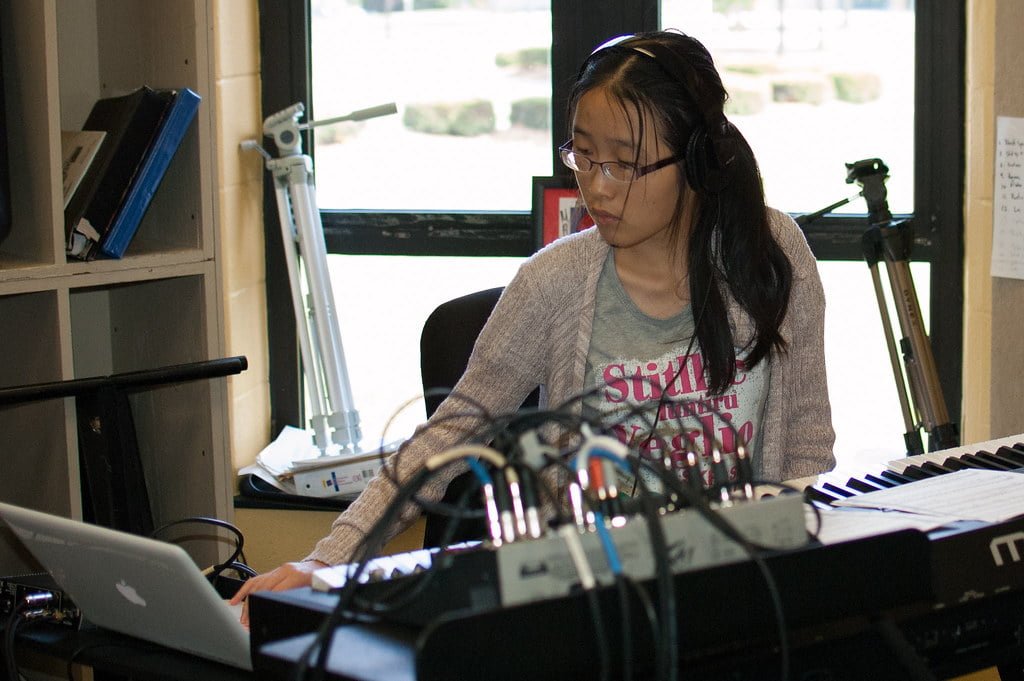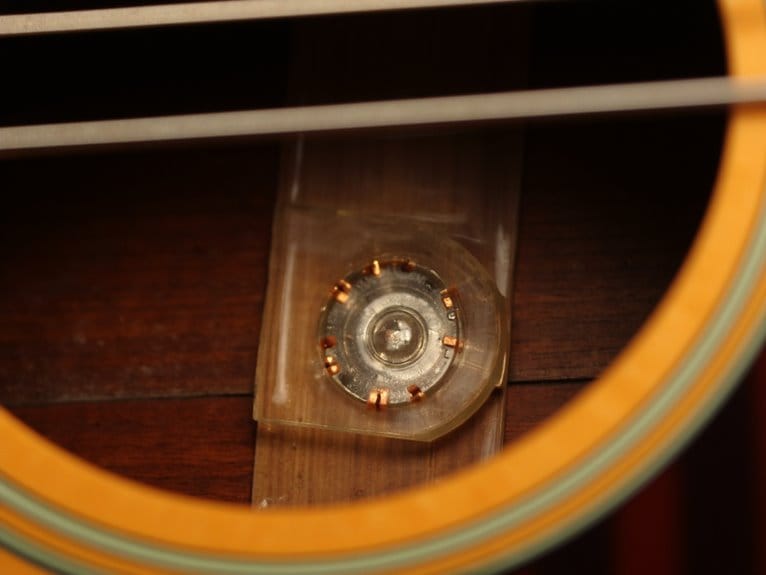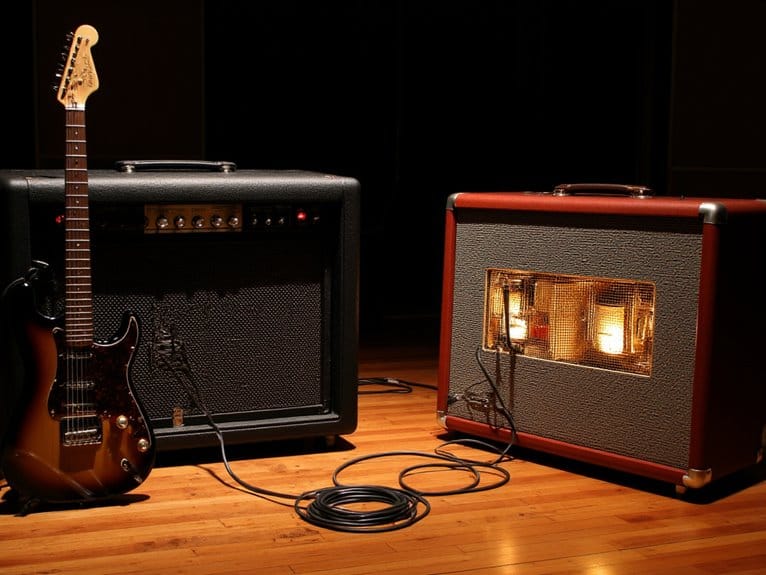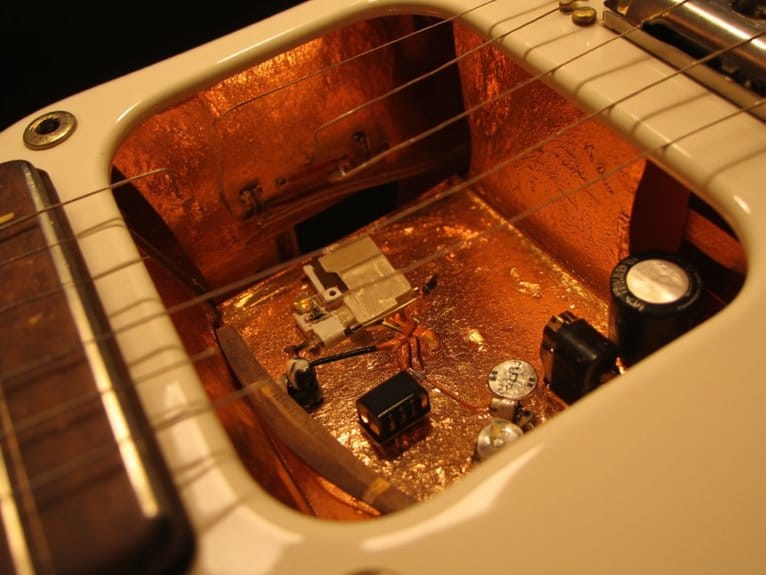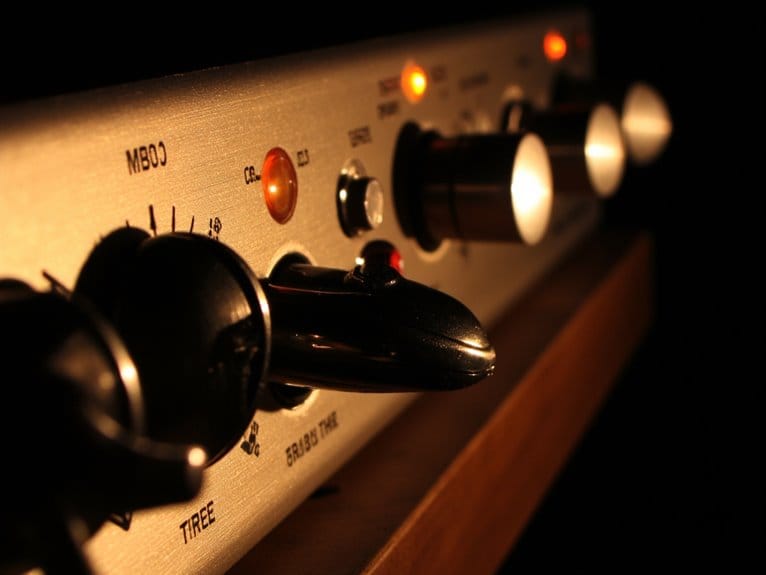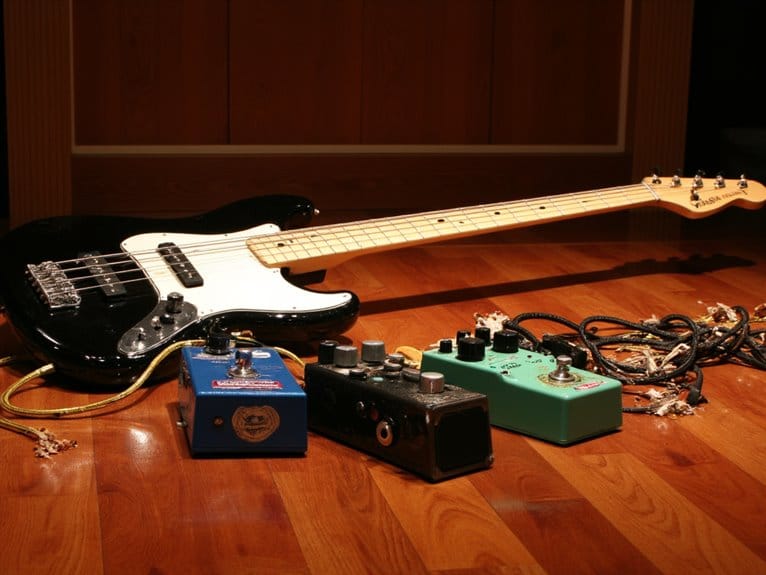Mixing Plugins Demystified: Understanding EQ, Compression, and Reverb
Understanding EQ, compression, and reverb is crucial to sculpting professional audio mixes with depth and clarity. EQ tweaks specific frequencies for tonal nuances, while compression shapes dynamics and prevents clipping. Reverb and delay add space, with pre-delay fine-tuning placement in the mix. Utilizing these tools practically guarantees a balanced and immersive audio experience. Advanced techniques like multi-band compression and sidechain compression offer further nuances for audio manipulation. Learning how to apply these tools effectively is key to achieving high-quality audio production.
We are supported by our audience. When you purchase through links on our site, we may earn an affiliate commission, at no extra cost for you. Learn more.
The Power of EQ
In shaping the tonal characteristics of a sound, EQ wields a powerful tool by precisely boosting or cutting specific frequencies. Peak limiting is an essential aspect of EQ, especially in controlling the dynamic range of a track. By setting a threshold, peak limiting guarantees that no part of the audio signal exceeds a certain level, preventing clipping and distortion. This is vital in maintaining a consistent volume throughout the mix.
Moreover, EQ plays a significant role in shaping the harmonic content of a sound. By boosting specific frequencies, harmonics can be enhanced, adding richness and depth to the audio. Conversely, cutting certain frequencies can help clean up the mix by reducing unwanted harmonics or frequencies that clash with other elements in the track.
When it comes to transient shaping, EQ can influence the attack and release of a sound. By boosting frequencies in the higher range, the attack of an instrument can be emphasized, making it cut through the mix more prominently. On the other hand, reducing these frequencies can soften the attack, resulting in a smoother, more rounded sound.
Understanding how EQ affects peak limiting, harmonic content, attack, and release is essential for achieving a well-balanced mix with clarity and definition. Mastering these EQ techniques can elevate the quality of your productions significantly.
Mastering Compression Techniques
Exploring mastering compression techniques entails a deep understanding of the Threshold and Ratio settings’ interplay in shaping audio dynamics. The Threshold determines at what level the compression starts acting, while the Ratio controls the amount of compression applied beyond the threshold. Properly setting these parameters is key to achieving the desired balance and cohesion in a mix. Additionally, mastering the Attack and Release parameters is vital as they govern how fast the compressor reacts to incoming signals and how quickly it releases the gain reduction, impacting the overall feel and energy of the audio.
- Understanding vintage compressor types can aid in selecting the most appropriate tool for the task at hand, whether aiming for transparent dynamics control or adding color and character to the sound.
- Knowledge of dynamic processing is essential for effectively applying compression to different instruments, as each instrument responds uniquely to compression settings.
- Exploring Parallel and Serial Compression techniques offers versatility in sculpting the dynamics of a mix by blending the processed and unprocessed signals to achieve a desired sound.
- Experimenting with sidechain compression can create space in a mix by allowing certain elements to cut through without affecting the overall balance.
- Mastering multiband compression enables targeted processing of specific frequency ranges, providing a finer control over the dynamics of individual elements within a mix.
Unveiling Reverb Secrets
Revealing the complexities of reverb involves analyzing its basic elements and their influence on shaping spatial perception within a mix. Reverb and delay are fundamental in creating a sense of space and depth in audio production. Pre-delay, the time between the direct sound and the onset of the reverb tail, plays a critical role in establishing a perception of distance and separation. By adjusting the pre-delay settings, you can place sounds farther back in the mix or bring them closer to the listener.
The release time, often measured as RT60, is another essential parameter in reverb settings. It determines how quickly the reverb decays after the sound source stops. Understanding RT60 helps in tailoring the decay time of the reverb effect to suit the characteristics of the audio material and the desired spatial impression. Additionally, diffusion controls the density and spread of reverb reflections, influencing the perceived size of the virtual space. Higher diffusion values create a denser reverb texture, ideal for filling up spaces, while lower values result in a more transparent and spacious sound.
Different types of reverb, such as room and hall reverbs, offer distinct sonic characteristics. Room reverbs simulate smaller spaces like studios, providing a tight and intimate sound, whereas hall reverbs replicate larger environments like concert halls, offering a grand and expansive feel. Mastering these reverb secrets empowers you to sculpt immersive and enchanting soundscapes in your mixes.
Applying EQ, Compression, Reverb Practically
Utilizing EQ, compression, and reverb in a strategic manner is essential for achieving a polished and professional sound in audio mixing. When applying these tools practically in a mix, it is important to understand their individual roles and how they interact to shape the final sound. Here are some key points to keep in mind:
- EQ: Adjusting frequencies with EQ can help carve out space for each element in the mix, preventing muddiness and ensuring clarity. Use EQ to enhance the tonal balance of individual tracks and create separation between instruments.
- Compression: Compression plays a crucial role in controlling dynamics within a mix. By reducing the dynamic range, softer sounds can be brought forward, while louder sounds are kept in check. Properly setting compression parameters can help maintain a consistent level throughout the mix.
- Reverb: Adding reverb can provide depth and a sense of space to your mix. Experiment with different reverb settings to simulate various acoustic environments and enhance the overall realism of the audio.
- Balancing Act: Finding the right balance between EQ, compression, and reverb is essential to achieving a cohesive mix. Each element should complement the others without overpowering or masking important sonic details.
- Practice Makes Perfect: Regularly practicing with EQ, compression, and reverb in different mix scenarios can sharpen your skills and improve your ability to enhance audio elements effectively.
Advanced Tips for Audio Processing
To enhance precision in frequency shaping during audio processing, understanding the significance of the Q factor in EQ adjustments is essential. The Q factor, also known as bandwidth, determines the range of frequencies affected around the center frequency. A higher Q value narrows the bandwidth, making it suitable for surgical adjustments to specific frequencies, while a lower Q broadens the affected range, useful for gentle shaping or broad strokes. When employing multi-band compression, dividing the audio spectrum into different bands allows for independent control over each range’s dynamics. This technique is effective for managing complex mixes where certain frequencies may need more compression than others.
Incorporating sidechain compression introduces a rhythmic pumping effect by triggering the compressor with an external source, often the kick drum. This technique helps create a dynamic interplay between elements in the mix, enhancing the overall groove and energy. Advanced reverb techniques such as modulation, early reflections manipulation, and tailoring decay time can add depth and realism to the sound, creating a more immersive listening experience. Dynamic EQ, on the other hand, automatically adjusts frequency bands based on input signal levels, making it ideal for controlling resonances and addressing tonal inconsistencies dynamically. Experimenting with these advanced audio processing techniques can elevate your mixes to new heights of clarity and professionalism.

